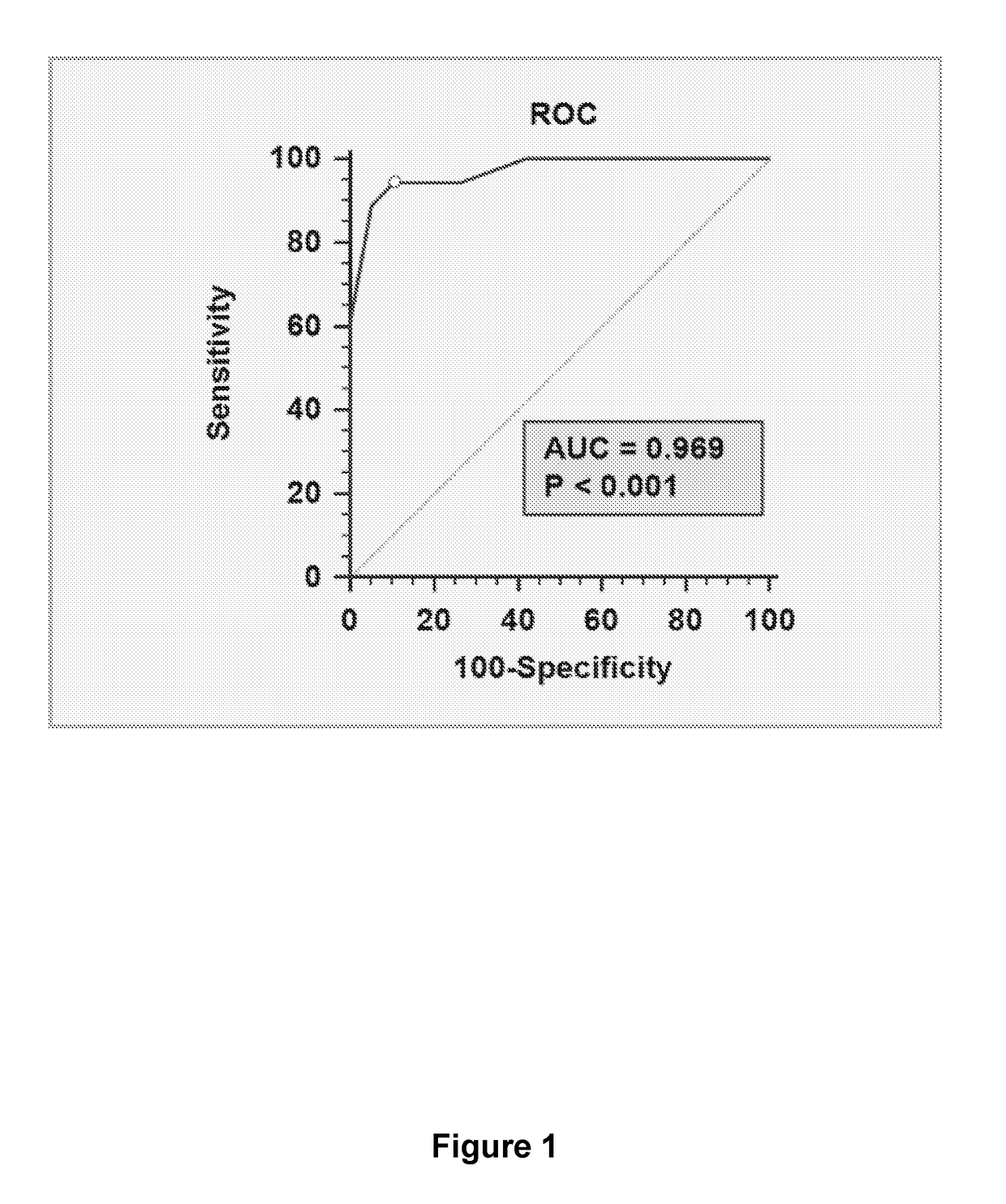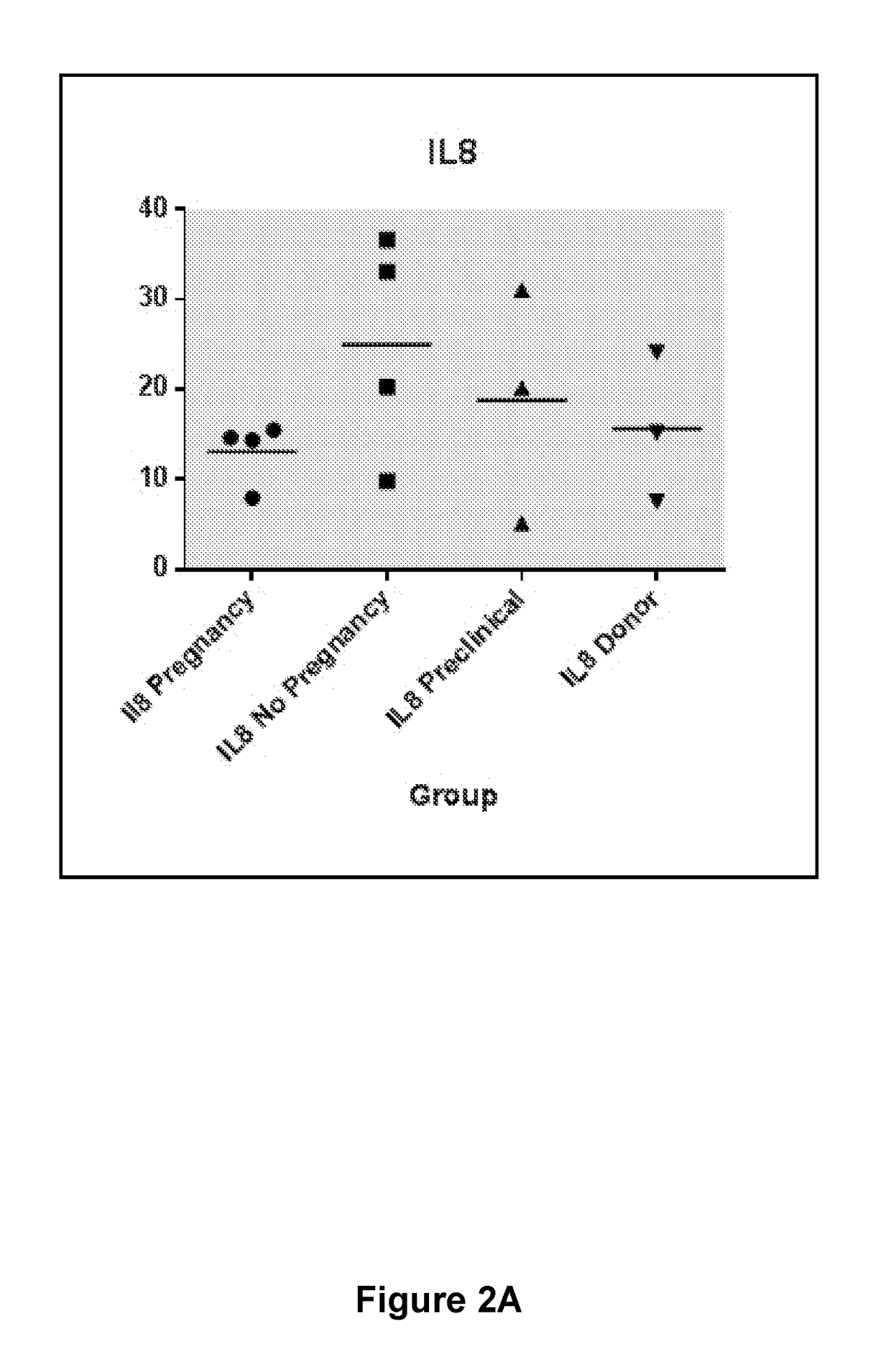Prognostic Assay for Success of Assisted Reproductive Technology
a technology of assisted reproductive technology and assay, which is applied in the direction of material testing goods, biochemistry equipment and processes, instruments, etc., can solve the problems of emotional and stressful experience of the art process, and achieve the effects of facilitating endometrial receptivity, facilitating endometrial receptivity, and facilitating clinical pregnancy
- Summary
- Abstract
- Description
- Claims
- Application Information
AI Technical Summary
Benefits of technology
Problems solved by technology
Method used
Image
Examples
example 1
[0126]An endometrial receptivity predictive test is performed prior to the window of implantation (hCG+5 days or mid secretory phase equivalent) for use in an IVF clinic. hCG may be replaced by another drug (e.g. GnRHa) which is capable of inducing an ovulation induction trigger. This is both to permit time for the assay procedure to be completed and results reported / interpreted, and to minimize interference in the uterine cavity at the time of embryo transfer / implantation. Ten proposed endometrial receptivity markers (identified in receptive mid-secretory phase studies) are tested on a cohort of uterine lavage samples collected from fertile and infertile women. Unlike previous studies, these samples were collected during the early secretory (pre-receptive) phase of their natural cycle.
[0127]The cohort comprised fertile (n=19) and primary idiopathic infertile (n=18) women for whom male factor, ovulatory, and tubal defects having been eliminated as causati...
example 2
Analysis of Cohort Undergoing ART
[0132]An analysis was performed of a small cohort of women undergoing ART, hence during stimulated cycles. The collection of uterine lavage was performed during egg collection at hCG+2 (early secretory equivalent) in hormone stimulated cycles. Other ovulation triggers may be used such as GnRHa or another drug. Patients were subsequently classified as having ‘pregnancy’, ‘no pregnancy’, or pre-clinical pregnancy (i.e. despite an initial positive pregnancy test, no sac was detectable by ultrasound). In addition lavage from normally fertile women who were undergoing a hormone stimulated cycle as oocyte donors were also tested.
[0133]The results (FIG. 2) identified that G-CSF was significantly upregulated (p=0.0002) in women who did not become pregnant, compared with those that did. Additionally, it was seen that among the egg donors (otherwise fertile women) being stimulated that their level of G-CSF was similar to that of the infertile women for whom a ...
example 3
[0136]Data presented here identify a cohort of three biomarkers which are able to discriminate fertile and infertile women during the early secretory pre-receptive phase of their menstrual cycle. A subsequent study of a small number of women undergoing stimulated ART cycle revealed that individually G-CSF could discriminate those women who went on to become pregnant from those who did not. Additionally, VEGFA was able to discriminate clinical pregnancy from pre-clinical pregnancy, while IL-8 is elevated in women not becoming pregnant.
PUM
| Property | Measurement | Unit |
|---|---|---|
| concentrations | aaaaa | aaaaa |
| stress | aaaaa | aaaaa |
| body mass index | aaaaa | aaaaa |
Abstract
Description
Claims
Application Information
 Login to View More
Login to View More - R&D
- Intellectual Property
- Life Sciences
- Materials
- Tech Scout
- Unparalleled Data Quality
- Higher Quality Content
- 60% Fewer Hallucinations
Browse by: Latest US Patents, China's latest patents, Technical Efficacy Thesaurus, Application Domain, Technology Topic, Popular Technical Reports.
© 2025 PatSnap. All rights reserved.Legal|Privacy policy|Modern Slavery Act Transparency Statement|Sitemap|About US| Contact US: help@patsnap.com



